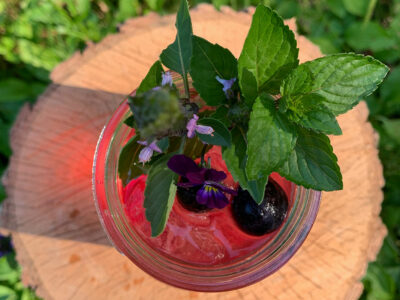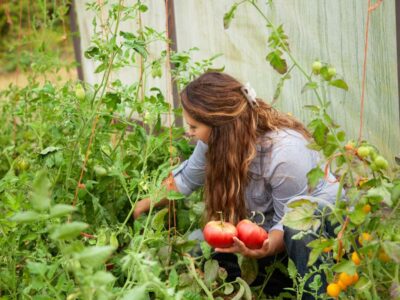Learning how to make jam and jelly at home is something every homesteader should know how to do.
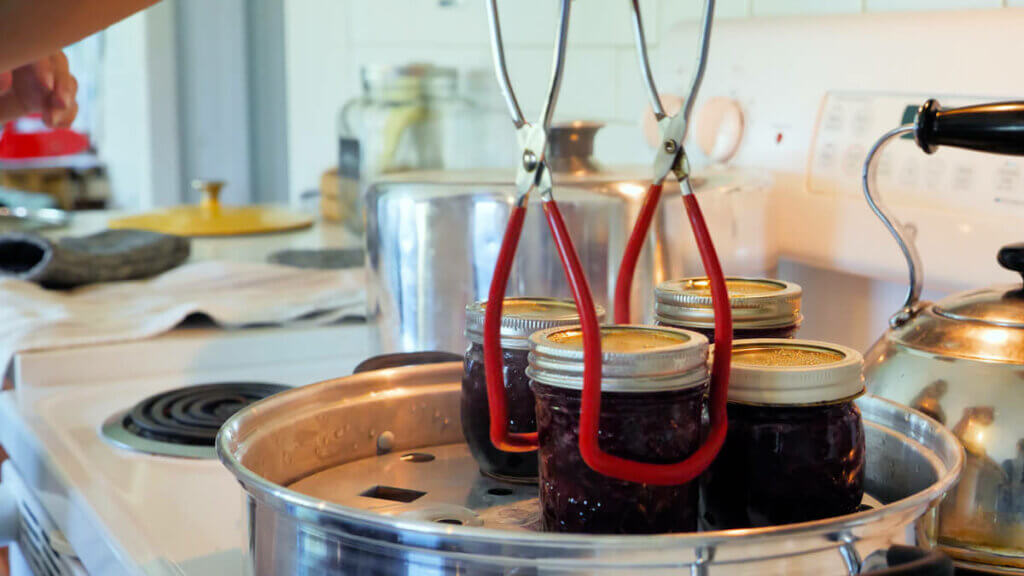
It helps preserve our plum, grape, blackberry, raspberry, or strawberry harvest for year-round eating without the use of high fructose corn syrup, food dyes, loads of sugar, or chemical laden pectin in store bought varieties.
It’s frugal (especially when you grow your own fruit) and most importantly, it plain tastes amazing. As much as I love making things healthy and frugally at home (and from scratch) if it doesn’t taste good, then no one is going to want to eat it. That kind of defeats the purpose, right?
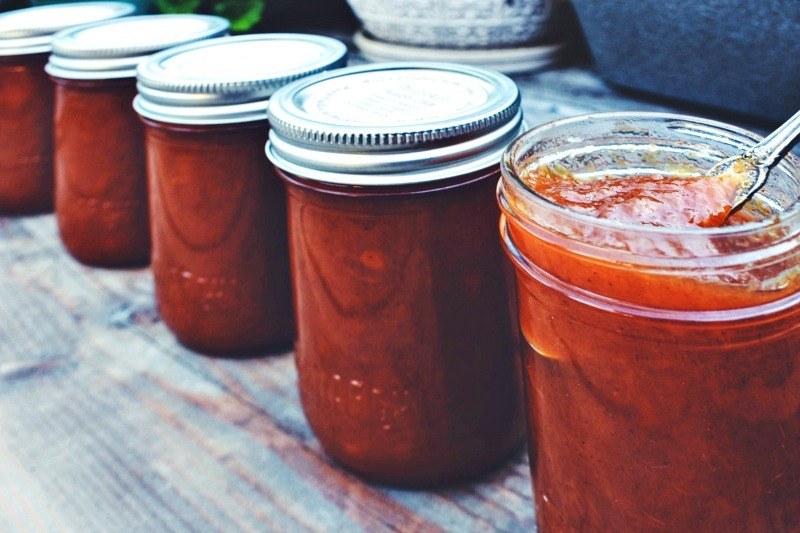
Table of Contents[Hide][Show]
Why You Should Learn How to Make Jam
When looking through many canning books and homemade jam and jelly recipes, I found complicated recipes, some requiring three days to prepare, or containing exotic expensive ingredients I had no idea where to find or even purchase.
I use traditional homemade jam and jelly recipes that have been passed down for generations. This traditional method is what our pioneer ancestors used when you put it up at home or went without.
A Healthier Choice
Typical store-bought jams may make you question what is the main ingredient in jam? They often contain just as much (if not more) sugar than fruit, and often in the form of high fructose corn syrup. I don’t know about you, but I prefer tasting the fruit instead of the sugar.
When making homemade jam and jelly, you can control the ingredients. You don’t have to use expensive store bought pectin or bucket loads of sugar.
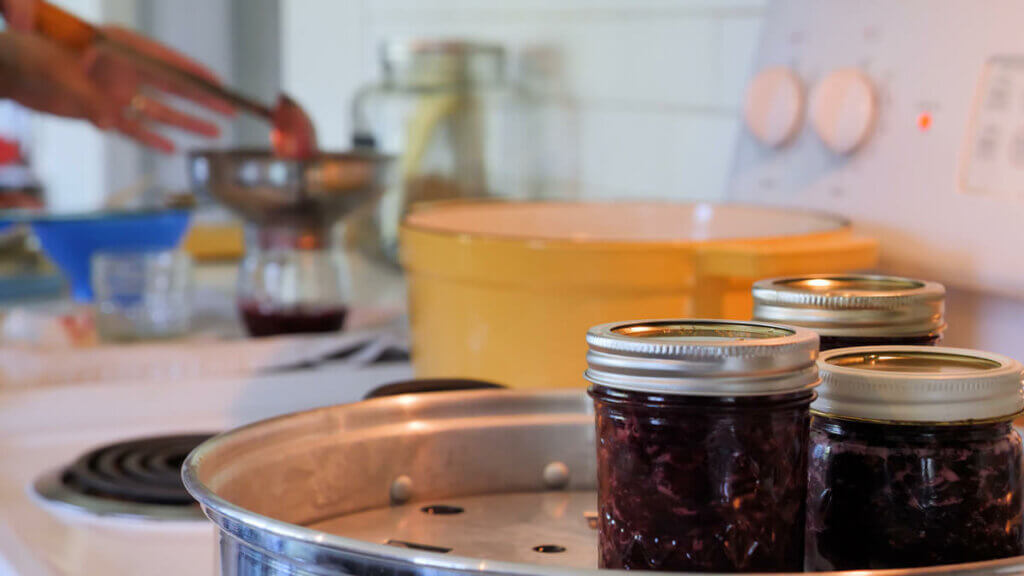
Preservation Skills
Homemade jams and jellies have been a way to preserve fruits at home to use yearlong for hundreds of years. They allow us to experience the delicious taste of strawberries on the frigid days of January and the zest of blueberries in the soggy days of spring.
Fruit is often ready to harvest during a busy season of the year. The beauty of jams and jellies is that you can freeze the fruit, and then thaw and can as your schedule allows. As a bonus, freezing promotes the juices to be drawn from the fruit, and speeds up the jam making process!
Jams and jellies are a great beginner canning project. You can make small batches, and it’s safe for waterbath canning. Nothing will give you a boost of confidence to keep growing as a canner like looking at a beautiful jewel toned jar of home canned jam in your pantry.
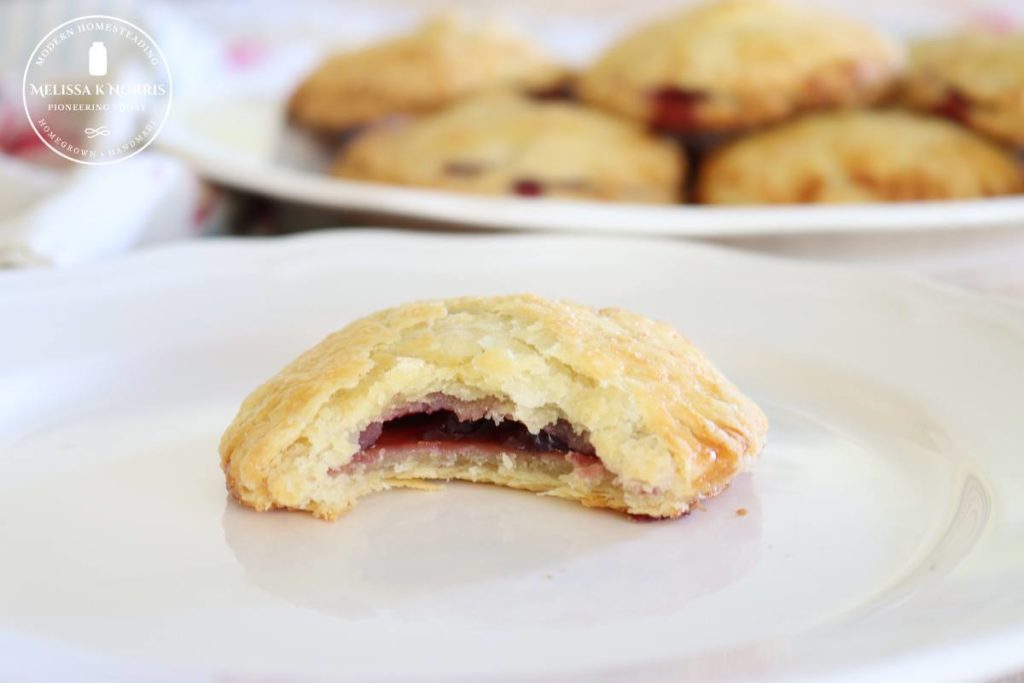
Uses for Homemade Jam
Jams can be used in sauces such as this sweet and sour meatball recipe, marinades, filling for cakes or homemade pop tarts, a topping for homemade yogurt or ice cream, and a spread for flaky buttermilk biscuits or artisan bread fresh from the oven.
I’m guilty of sometimes just eating jam by the spoonful.

The Difference Between Jam and Jelly
There is a slight difference between jam and jelly. Jam is made from the whole fruit and contains pureed (or chunks) of fruit, while jelly is made with just the juice of the fruit.
We make jam when possible to use the most of the fruit. However, some fruits with larger seeds (such as blackberries) tend to make better jelly.
Ever heard of jamly? This is what I call my raspberry jam. I use my grandmother’s sieve to strain out the large seeds, but use the rest of the fruit and smaller seeds to make the jam.

Anatomy of Jam
We need to talk about safety rules. I’m not always one to follow the rules, but when it comes to canning, I don’t take chances.
Canning safety is near and dear to my heart, which is why I designed this Home Canning with Confidence Course to encourage others to can safely as well.
I follow recommended guidelines by the USDA for home canning, and do my best to stay up to date.
I know a lot of older canning books and recipes don’t follow these, but I’m not willing to risk it. Here’s the link to the USDA Complete Guide to Home Canning for your own reference.
In addition to safety, it’s important to understand what ingredient makes jam set up is actually a trinity of three things. The amount of sugar, pectin, and acid working together to create the gelling point. You can read the exact chemistry, including molecular structure here.
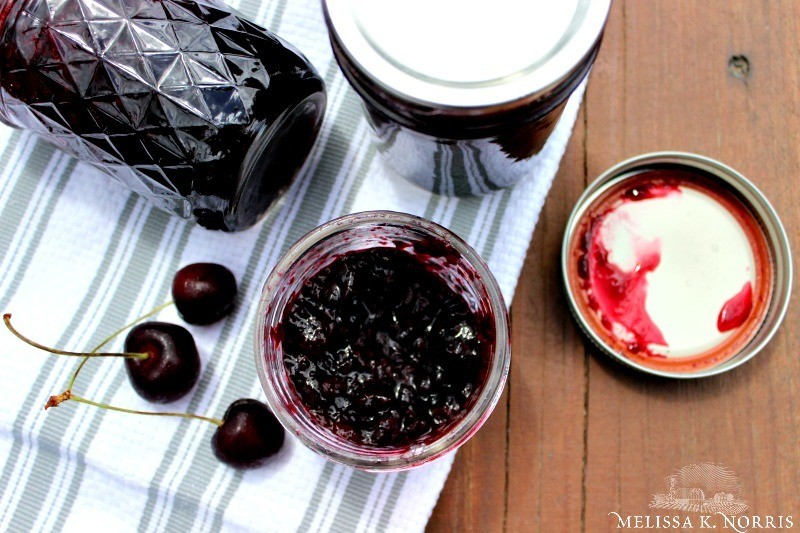
Sugar
It is a common misconception that jams and jellies require far more sugar than necessary to set. You will find that in all of my jams and jelly recipes, you can use a modest amount of sugar, and still have success!
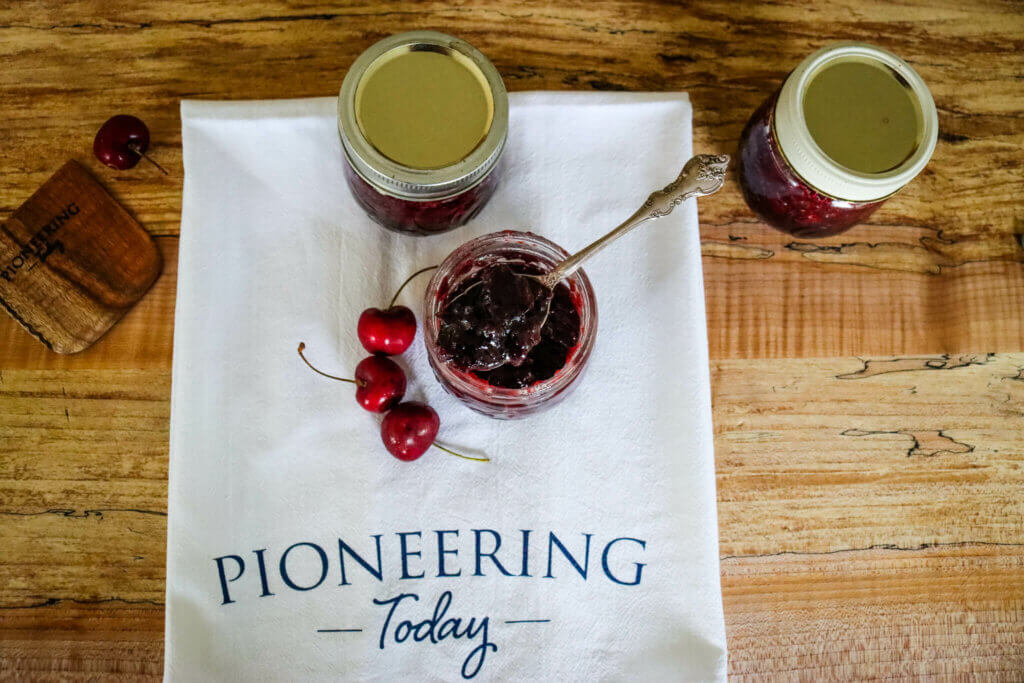
Pectin
Pectin is naturally found in fruits, though it is higher in some fruits than others. Fruits naturally high in pectin are:
- Apples
- Crab Apples
- Grapes
- Quince
- Currants
- Lemons
- Limes
Under ripe fruit has higher levels of pectin as well. Jams are the easiest to make with natural pectin sources because they keep the skin in the product, where a higher concentration of pectin is found. But, I’ve successfully made jelly without store bought pectin as well.
Lower pectin containing fruits will need additional pectin added for a set. Fruits lower in pectin are:
- Berries
- Cherries
- Peaches
- Rhubarb
If using the natural pectin of limes or lemons, you will want to use a zester to grate off only the colored part (the white part is called the pith, and will cause your jam to taste bitter).
Apples should be slightly under ripe to get the highest level of pectin. Grating the entire cored apple along with the skin is recommended to achieve the necessary level of pectin.
Acid
Let’s talk acid. A food must have a ph level of 4.6 or lower to be considered safe enough for water bath canning.
Most fruits are acidic and safe for canning with the exception of bananas, figs, melons, dates, and papayas. For a full list of foods and their pH level you can view this list.
You need to make sure the acid level is high enough when using low sugar recipes. Jams and jellies are made with fruit which are acidic, with the exception of bananas, which aren’t acidic enough on their own to can.
You may occasionally see combination recipes with bananas but unless they are from a trusted source, I’d use caution in canning them.
Fruits that require added acid are as follows:
- Blueberry
- Sweet Blackberry
- Pear
- Apricot
- Mango
- Guava
- Sweet Cherry
- Sweet Plum
- Sweet Grape
- Mulberry
- Elderberry
- Ripe Quince
- Apple
Fruits that don’t require extra acid are as follows:
- Strawberries
- Currants
- Gooseberries
- Sour Cherry
- Sour Blackberry
- Sour Plum
- Kiwi
- Raspberry
- Pineapple
Added acid is ¼ cup of lemon or lime juice to 4 cups mashed or simmered fruit.
Please note that freezer jam doesn’t require the extra acid because it’s not intended to be shelf stable.
If you’re ever in doubt on the safety of a jam or jelly recipe for home canning, you can freeze the product or store it in the fridge for a few weeks as you eat it up.
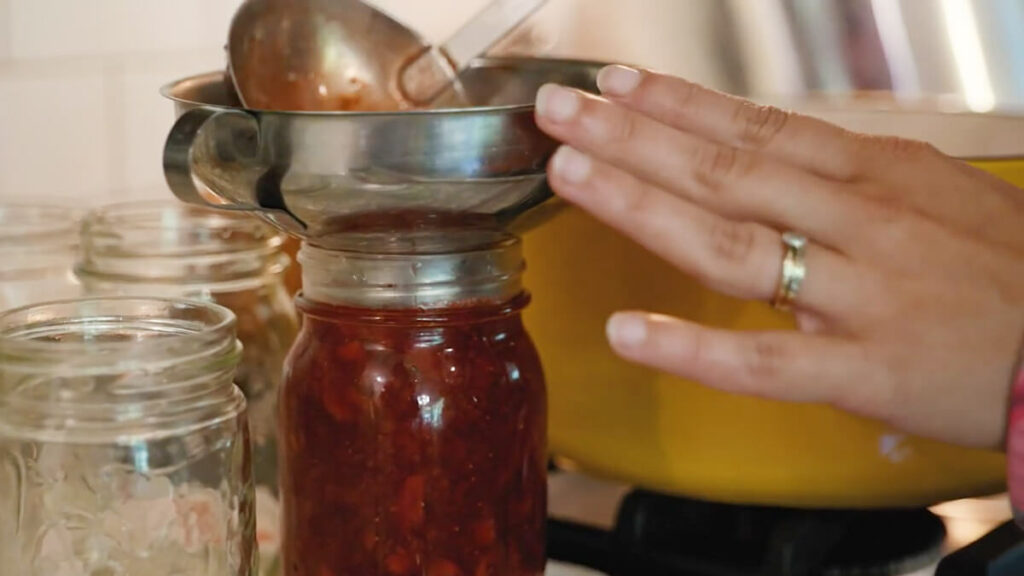
How To Make Jam
Equipment Needed
- Water Bath Canner – Also known as a “boiling water bath” a water bath canner is a large pot with a lid and a rack. The most common are granite wear, though many canners prefer stainless steel water bath canners as they won’t rust. Both are fine choices. The granite wear canner is a more economical choice while the stainless steel water bath canners will hold up for years to come. But just know that any large pot with lid will work as long as your canning jars can be completely covered in water.
- Canning Jars – Usually jam and jelly recipes show their yield in four or eight ounce jelly jar sizes, hence the name, right? You can also can them in pint sized jars depending upon the size of your family and how much jam or jelly you use. I prefer to mainly use jelly jar sizes so I don’t have to worry about the jam or jelly molding in the fridge before we’ve eaten all of it. I hate wasting or throwing out food, anyone else with me?
- Lids – Regular canning lids or re-usable Tattler lids both work well. If you’re used to regular canning lids, Tattler lids are slightly different, but they are the only lid safe to re-use in canning. Here’s my review of re-usable Tattler lids.
- Sieve – A sieve has small holes in it and is shaped like a cone with a stand and a wooden pestle, allowing you to crush and push foods with seeds through it, capturing the seeds and giving you just the pulp and juice. A sieve is useful for applesauce, tomato sauce, and making jelly with fruits like raspberries and blackberries. I have my great-grandmother’s sieve and it is still in perfect working shape. I prefer using a sieve to a food mill or cheese cloth. I find it faster and more efficient.
- Heavy Stainless Steel or Cast Iron Pot – A wider surface area pot encourages more even cooking when cooking the jam over medium heat.
- Wooden Spoon – Wooden spoons are sturdy and heat resistant.
- Glass Candy Thermometer – Jam sets at 220°F. The best way to know you’ve reached this temperature is with a candy thermometer. Pro Tip: It’s important to note that if you’re at high altitude, 1,000 feet (or more) above sea level, then you need to subtract 2°F for every 1,000 feet above sea level.
- Immersion Blender – This is optional, but if you have one, use it to mash the fruit. A potato masher, food processor, or blender also work for this step.
- Ladle – Works great to scoop the jam into the containers.
- Canning Tongs – These are used to remove hot jars to and from the canner.
- Funnel – A funnel isn’t required but will keep the mess off the top of the jar and more controlled as you scoop the jams or jellies into your containers.
- Stainless Steel Steam Juicer – This is optional, but you will love it! The stainless steel steam juicer knocks off hours and tons of hands on time. It’s a thing of beauty and allows you to extract the juice for jelly, making it extremely easy. In less than an hour, you’ll have gorgeous juice ready for jelly making.
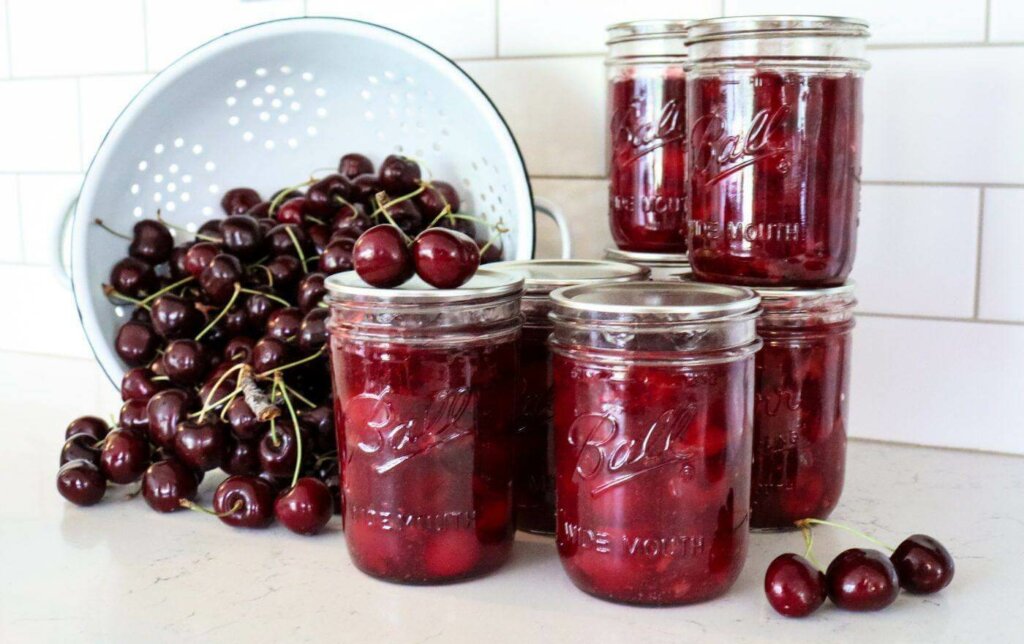
Ingredients Needed
- Fruit – When you’re picking or selecting fresh fruit for jams, it’s best if approximately 1/4 of the total fruit is slightly under ripe fruit for a better set.
- Sugar – Instead of using processed granulated sugar, I use evaporated cane juice. Please note that when sweetening with raw honey, the heat from the canning process will kill the benefits of raw honey. Without these benefits, I’ve found using raw honey to be cost prohibitive for jam and jelly making.
- Water – Use the exact amount the recipe calls for.
- Pectin – If you want faster cooking time or the reassurance of a set with store bought pectin, I recommend using Pomona’s Pectin, which is truly a natural pectin made from citrus that uses calcium water instead of sugar for the set. Pomona additionally offers instructions using honey, and proper ratios for scaling the recipes up or down.
- Low Sugar Jam Recipe – Want to learn how jam is made step by step? You can sign up for my free Low Sugar Jams and Jellies eBook, or check out some of these recipes on my blog.
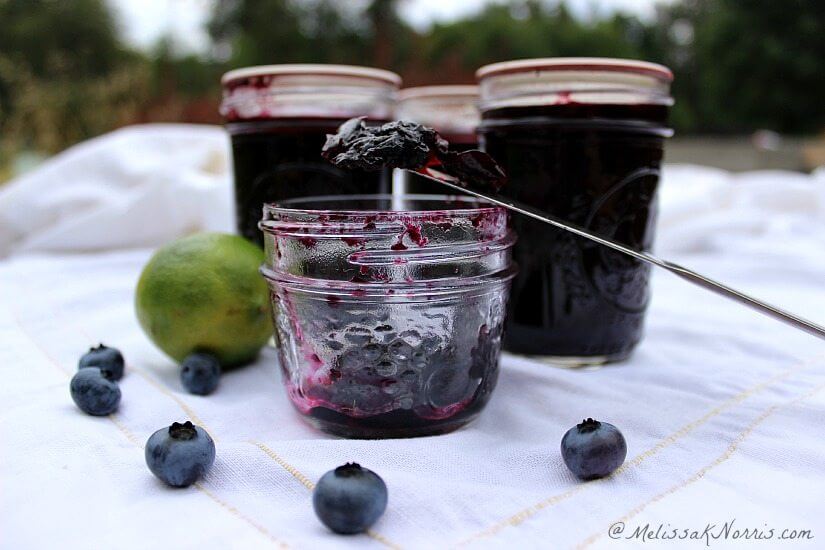
Low Sugar Jam Recipes
- Blueberry Jam Recipe without Pectin and Low Sugar
- Easy Blackberry Jam Low Sugar
- Cherry Jam without Pectin and Low Sugar
- Apple Pie Jam Low Sugar Recipe
- Spicy Peach Jam Low Sugar and No Pectin
- Strawberry Jam without Pectin and Low Sugar
- Strawberry Rhubarb Jam
- Tomato Onion Jam
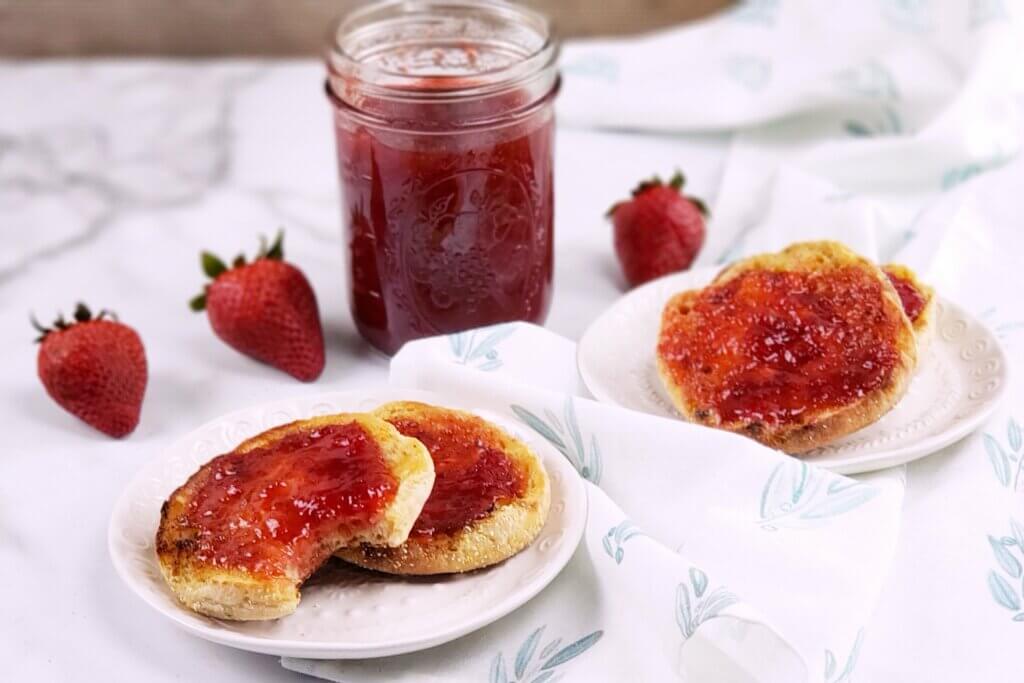
Troubleshooting Tips
The #1 problem you will run into when learning how to make jam is the jam not setting up. Keep in mind that the jam will continue to set somewhat when allowed to cool completely, but in order to know that you are headed in the right direction while it is still hot, try one of these two methods.
- The Sheet Test – Take a large metal spoon and put it in the freezer when you begin making your jam. When you think your jam is done, take the frozen spoon and dip it into the boiling jam and hold it up so that the spoon is sideways and the jam can drip off the edge. If it just runs off, it’s not ready (see tips below). Large drops means you are almost there, and the sheeting is when the jam drips off the spoon in one sheet instead of individual drops.
- The Cold Plate Test – Put a saucer or small plate in the freezer. Put a small spoonful of jam on the plate and leave it in the freezer for 1 minute. Pull it out and push against the edge of it with your finger. If you can run your finger through it, and it stays separated, then the jam is ready. If it slides back together, it’s not ready yet (see tips below).
Pro Tip: Do not use a room temperature spoon or plate for these methods. They will not yield the same results.
If you do these tests and the jam is still not quite finished, you have a few options.
- Cook Longer – Continue to boil for an additional 5 minutes and test it again.
- Add More Sugar – If you have cooked the jam for 20 minutes, and it’s still not gelling, I recommend adding more sugar. Add ¼ to ½ cup sugar and cook for another 3-5 minutes. You can continue adding sugar in ½ cup measurements until it sets, but be aware that it will continue to get sweeter!
- Add Lime Or Lemon Juice – You may need to adjust the acid level by adding 1-2 teaspoons of lime or lemon juice and cooking for another 3-5 minutes.
- Add Pectin – Add natural pectin by grating citrus peel or pectin into the jam and cooking for 3-5 minutes longer.
Pro-tip: Sometimes you may have to adjust your original goal and decide to can it as a syrup.
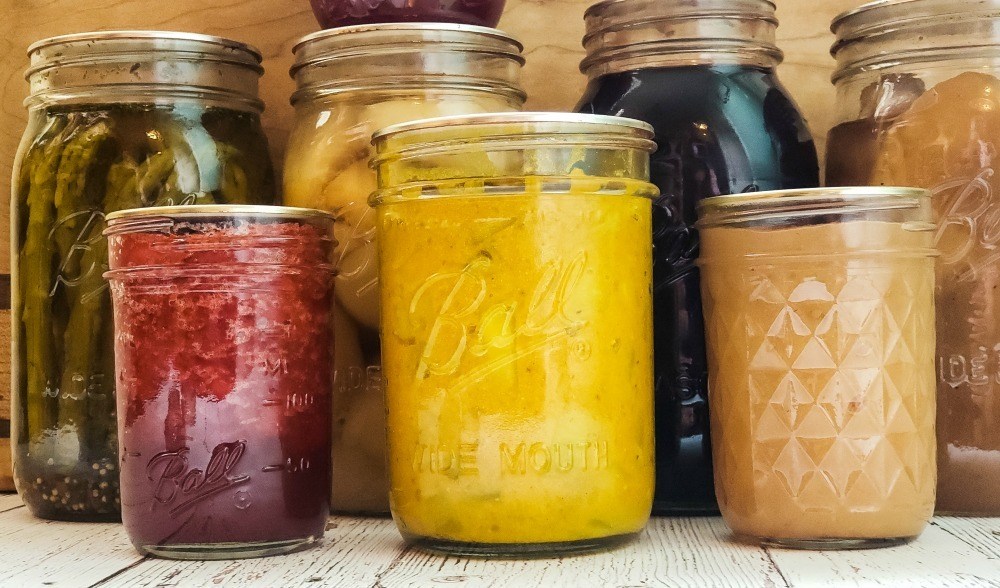
Storing Home Canned Jams and Jellies
The fruit and sugar in jams and jellies are shelf stable, and can store for up to a year if they have been canned correctly. After opening, refrigerate jam for up to 3 weeks or freeze for 3-6 months.
To learn more about storage of canned goods, read how to store home canned foods safely – jar stacking and canning rings.
Verse of the Week:
- Podcast #57 – Galatians 6:9
- Podcast #58 – Proverbs 3:5-6
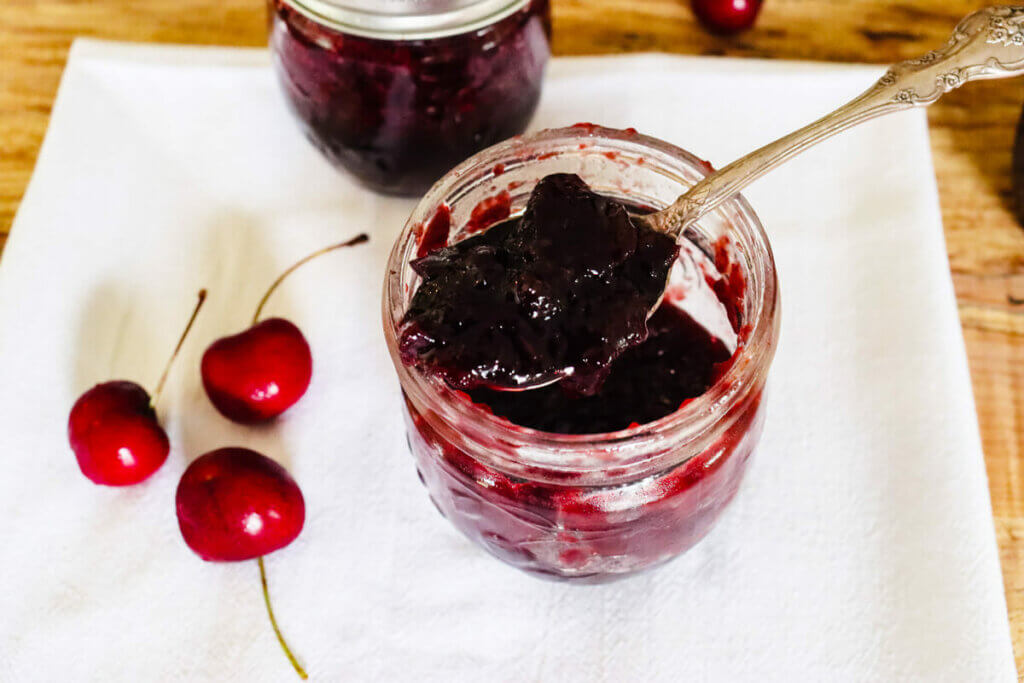
Resources:
- Free Jams and Jellies eBook
- Home Canning with Confidence Course
- Ball Book of Canning
- The Made From Scratch Life
- Molecular Structure of Jam
- USDA Complete Guide to Home Canning Safety Guidelines
- Typical pH and Acid Content of Fruits and Vegetables
- Pomona’s Pectin
- GMO 101 What’s In Your Food?
- Keeping GMO’s Out of Your Food
- Tattler Lid Review


